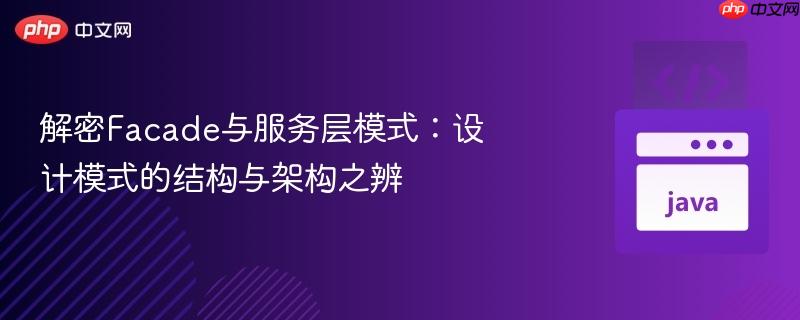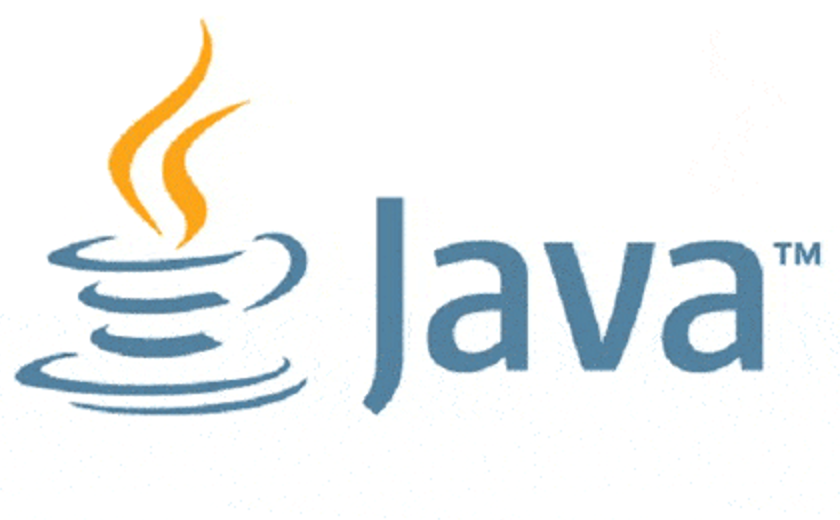
Facade模式作为一种结构型设计模式,旨在为复杂子系统提供一个简化的接口。而服务层模式则是一种架构型设计模式,其核心在于对服务进行逻辑分组和组织,确保相关功能集合在一起。两者主要区别在于:Facade侧重于简化接口,隐藏底层复杂性;服务层则着眼于服务的组织与职责划分,管理业务逻辑。
在软件设计中,Facade(外观)模式和服务层(Service Layer)模式都致力于提供更高层次的抽象,以简化系统交互和管理复杂性。然而,它们在设计哲学、关注点和应用场景上存在显著差异。理解这些差异对于构建清晰、可维护且可扩展的系统至关重要。
Facade模式是一种结构型设计模式,其核心思想是为子系统中的一组接口提供一个统一的、高层次的接口。这个“外观”对象隐藏了子系统的复杂性,并为客户端提供了一个更简洁、更易于使用的接口。
核心思想: Facade模式通过创建一个封装了多个复杂组件的单一接口,将客户端与子系统解耦。客户端无需了解子系统内部的各个组件如何协同工作,只需通过Facade提供的简单方法即可完成操作。
应用场景示例: 想象一个在线购物系统。当用户点击“购买”按钮时,背后可能涉及一系列复杂操作,例如:
如果没有Facade模式,客户端可能需要直接调用ProductAvailabilityService、PaymentService和EmailNotificationService等多个服务。而通过Facade模式,我们可以创建一个ShopFacade,将这些操作封装起来。
// 假设这是子系统中的复杂服务
class ProductAvailabilityService {
public boolean checkAvailability(List<String> productIds) {
System.out.println("检查商品库存...");
// 实际的库存检查逻辑
return true;
}
}
class PaymentService {
public boolean processPayment(String userId, double amount) {
System.out.println("处理支付...");
// 实际的支付处理逻辑
return true;
}
}
class EmailNotificationService {
public void sendPurchaseConfirmation(String userId, List<String> productIds) {
System.out.println("发送购买确认邮件...");
// 实际的邮件发送逻辑
}
}
// Facade类,提供简化的接口
public class ShopFacade {
private ProductAvailabilityService availabilityService;
private PaymentService paymentService;
private EmailNotificationService emailService;
public ShopFacade() {
this.availabilityService = new ProductAvailabilityService();
this.paymentService = new PaymentService();
this.emailService = new EmailNotificationService();
}
// 客户端只需调用此方法即可完成购买流程
public boolean buyProducts(String userId, List<String> productIds, double totalAmount) {
System.out.println("--- 开始购买流程 ---");
if (!availabilityService.checkAvailability(productIds)) {
System.out.println("购买失败:部分商品缺货。");
return false;
}
if (!paymentService.processPayment(userId, totalAmount)) {
System.out.println("购买失败:支付处理失败。");
return false;
}
emailService.sendPurchaseConfirmation(userId, productIds);
System.out.println("--- 购买成功,已发送邮件通知 ---");
return true;
}
public static void main(String[] args) {
ShopFacade shop = new ShopFacade();
List<String> items = Arrays.asList("Laptop", "Mouse");
shop.buyProducts("user123", items, 1200.00);
}
}在这个例子中,ShopFacade充当了外观,将复杂的购买流程抽象为一个简单的buyProducts()方法,客户端无需关心内部的三个服务如何协调工作。
服务层模式是一种架构型设计模式,其主要目的是组织应用程序的业务逻辑。它将应用程序的业务逻辑封装成一系列服务,每个服务负责处理特定的业务功能,并且通常将相关的服务逻辑地分组到一起。
核心思想: 服务层作为应用程序与领域模型(或数据访问层)之间的协调者,定义了应用程序所能执行的所有可用操作。它将业务逻辑从用户界面或数据访问逻辑中分离出来,确保业务规则和流程集中管理,提高系统的可维护性和可扩展性。
应用场景示例: 考虑一个医院管理系统。系统可能包含大量与病人、医生、预约等相关的业务操作。通过服务层模式,我们可以将这些操作按照其所属的业务领域进行逻辑分组。
// 假设这是底层的数据访问或领域模型
class PatientRepository {
public Patient getPatientById(String id) { /* ... */ return new Patient(id, "张三"); }
public List<pre class="brush:php;toolbar:false;"scription> getPrescriptionsForPatient(String patientId) { /* ... */ return Arrays.asList(new Prescription("感冒药")); }
}
class DoctorRepository {
public Doctor getDoctorById(String id) { /* ... */ return new Doctor(id, "李医生"); }
public List<Appointment> getDoctorAppointments(String doctorId) { /* ... */ return Arrays.asList(new Appointment("病人A", new Date())); }
}
// 病人服务层
public class PatientService {
private PatientRepository patientRepo;
public PatientService() { this.patientRepo = new PatientRepository(); }
public Patient retrievePatientHistory(String patientId) {
System.out.println("获取病人历史信息...");
return patientRepo.getPatientById(patientId); // 实际可能更复杂,涉及多表查询
}
public List<pre class="brush:php;toolbar:false;"scription> getCurrentPrescriptions(String patientId) {
System.out.println("获取病人当前处方...");
return patientRepo.getPrescriptionsForPatient(patientId);
}
// 其他病人相关业务方法,如更新病人信息、添加诊断等
}
// 医生服务层
public class DoctorService {
private DoctorRepository doctorRepo;
public DoctorService() { this.doctorRepo = new DoctorRepository(); }
public List<Appointment> getDoctorAppointments(String doctorId) {
System.out.println("获取医生预约信息...");
return doctorRepo.getDoctorAppointments(doctorId);
}
public void scheduleAppointment(String doctorId, String patientId, Date time) {
System.out.println("安排预约...");
// 实际的预约逻辑,可能涉及事务管理、冲突检测等
}
// 其他医生相关业务方法,如更新医生日程、查看病人详情等
}
public class HospitalApplication {
public static void main(String[] args) {
PatientService patientService = new PatientService();
DoctorService doctorService = new DoctorService();
// 客户端通过服务层调用业务逻辑
Patient p = patientService.retrievePatientHistory("P001");
System.out.println("病人姓名: " + p.getName());
List<Appointment> appointments = doctorService.getDoctorAppointments("D001");
System.out.println("医生预约: " + appointments.size() + "个");
}
}在这个例子中,PatientService和DoctorService分别代表了不同的服务层,它们各自封装了与病人或医生相关的业务逻辑。这些服务层提供了一个清晰的API,供上层应用(如UI或API控制器)调用。
尽管两者都涉及提供抽象和简化,但它们的关注点和应用层次截然不同:

Magento是一套专业开源的PHP电子商务系统。Magento设计得非常灵活,具有模块化架构体系和丰富的功能。易于与第三方应用系统无缝集成。Magento开源网店系统的特点主要分以下几大类,网站管理促销和工具国际化支持SEO搜索引擎优化结账方式运输快递支付方式客户服务用户帐户目录管理目录浏览产品展示分析和报表Magento 1.6 主要包含以下新特性:•持久性购物 - 为不同的
 0
0

模式类型:
关注点:
目的:
作用范围:
粒度:
通过理解Facade模式的接口简化特性和服务层模式的业务逻辑组织能力,开发者可以更有效地设计和构建健壮、可维护的软件系统。
以上就是解密Facade与服务层模式:设计模式的结构与架构之辨的详细内容,更多请关注php中文网其它相关文章!

每个人都需要一台速度更快、更稳定的 PC。随着时间的推移,垃圾文件、旧注册表数据和不必要的后台进程会占用资源并降低性能。幸运的是,许多工具可以让 Windows 保持平稳运行。




Copyright 2014-2025 https://www.php.cn/ All Rights Reserved | php.cn | 湘ICP备2023035733号